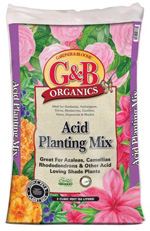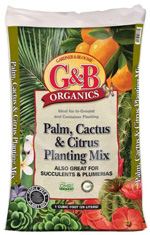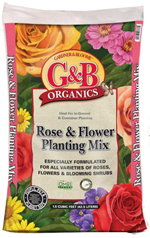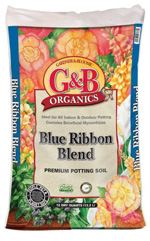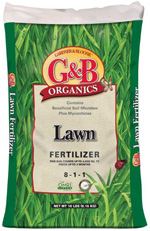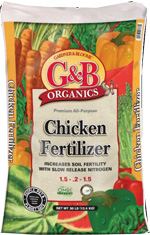|

|
 |
Featured Quote: "No two gardens are the same. No two days are the same in one garden." |
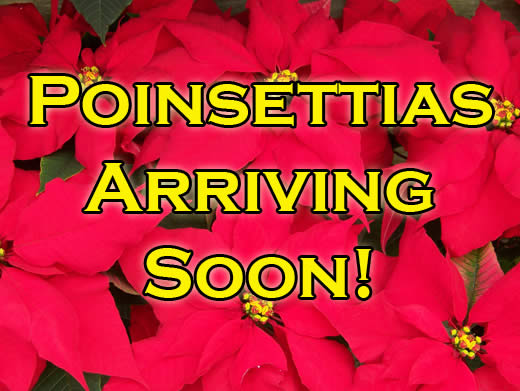 |
|
Now is the time for
Prohibit Pre Emergent  To prevent Annual Blue Grass (Poa Annua) in your lawn, we recommend a pre-emergent herbicide like Prohibit. A pre-emergent herbicide that provides residual control of many broad leaf weeds, grass and crabgrass in turf grass. New to homeowners, but widely used in the landscape and golf course industry. Prevents weeds and feeds the lawn all in one step. |
 |
 |
|
Poinsettias are a wonderful worldwide holiday tradition. In fact, next to a Christmas tree, nothing else says Christmas quite like poinsettias. Displayed alone or in groups, they can add a festive splash of color to every décor. From a centerpiece on a holiday table to a miniature plant decorating the corner of an office desk, to a colorful hanging basket that can brighten any room, the poinsettia is the perfect holiday gift. So how did poinsettias become so popular at Christmas--and where do they come from? According to Mexican legend, a poor Mexican girl named Pepita who could not afford a gift to offer to Christ on Christmas Eve picked some weeds from the side of a road. The child was told that even a humble gift, if given in love, would be acceptable in God's eyes. When she took the weeds into the church and laid them at the feet of the Christ child, they bloomed into red and green flowers. Poinsettias are native to the tropical forest at moderate elevations along the Pacific coast of Mexico and some parts of Guatemala. They are named after Joel Roberts Poinsett, the first United States Ambassador to Mexico, who introduced the plant in the U.S. in 1825. Poinsettias have come a long way from their humble beginnings. For years only variations of red flowers were propagated and grown. But now there are hundreds of color varieties available ranging from traditional shades of red, pink and white to burgundy, peach, striped, flecked and hand-dyed varieties. The sooner you purchase your poinsettias, the sooner you and your friends will be able to enjoy the unique holiday beauty that only they can provide. Poinsettias are fairly easy-going, and with proper care can last long past the holiday season. Just click on the link below for a complete care guide including tips for re-blooming the following season. Check out our Poinsettia Care Guide (click here). |

|
If you're looking for a plant to provide color for the fall and winter shade garden, cyclamen is a great choice. But cyclamen can do much more than that: even though it is technically a bulb, it doesn't really act like one. What do we mean? Aside from the fact that it does go dormant like most bulbs, unlike most bulbs it will grow almost as happily in the house as it does outdoors (providing a few simple rules are observed) and it blooms for a much longer period, from fall through spring. The appearance of the plant and its blooms is endlessly fascinating. The leaves are heart-shaped and grow luxuriantly to form a dense mound; these leaves can be mostly green or mostly silver with beautiful contrasting markings. The profuse flowers that stand well above this mass of foliage resemble graceful butterflies and come in red, white, pink, lavender and bi-colors. When planting your cyclamen outdoors, choose a shady to semi-shady spot with good drainage. It is important not to plant them too deeply; keep the top of the tuber slightly above the surrounding soil (this also helps keep water away from the crown of the plant, which can cause the tuber to rot). Feed regularly while the plant is actively growing and producing flowers; your plant will continue to grow and bloom from fall through early spring. As soon as the flowers begin to fade, snap the stems off near the base of the plant; likewise remove any dying foliage. Consider planting cyclamen in large groups of the same color or possibly two contrasting colors. A great combination is red and white--each color plays up the other to the greatest extent. Cyclamen are also very effective in mixed container plantings with pansies or ornamental kale or cabbage, possibly with some variegated needlepoint ivy draping over the sides. If you plan to grow your cyclamen indoors, choose a well-lit spot away from heater vents but out of cold drafts. Cyclamen prefers high humidity during the winter, so place your container in a tray full of pebbles with some water in it (do not let the pot sit in the water--the pebbles will help raise it up a little higher). Keep the plant well groomed and continue feeding with a liquid fertilizer. If you have a decorative pot the right size, you can simply slip your plant, nursery container and all, right into it. One caveat: if the outside pot you choose does not have drainage holes, make sure to remove your plant to water it and let it drain thoroughly. If you allow your cyclamen to stand in water, it will quickly die. Cyclamen do not mind being in a tight space, so it probably won't be necessary to repot it right away. If you do decide to repot your plant, use a good quality potting soil and choose a container just a little larger than the original one (make sure that the new pot has drainage holes). Given the right care, you can keep your cyclamen from year to year. When the weather begins to get very warm (mid-spring to early summer) it will stop blooming and the foliage will begin to die back. If it is in a pot, place it in a shady spot, where it will get occasional (but not frequent) water until it begins to grow again in the fall. If it is planted in the ground, it is a good idea to lift it and pot it, as it is easy to overwater it (especially in heavy soils) while it is dormant, which will cause it to rot. If you have never tried growing cyclamen before, now is the time to give it a try. We're sure you'll love them as much as we do! |
 |
 If you have tunnels of earth suddenly appearing throughout your lawn or garden, chances are you have been paid a visit by either moles or voles. Unlike gophers, they usually don't leave any visible entry or exit holes. If you have tunnels of earth suddenly appearing throughout your lawn or garden, chances are you have been paid a visit by either moles or voles. Unlike gophers, they usually don't leave any visible entry or exit holes.
Voles are small, mouse-like rodents that are commonly called meadow or field mice, but with shorter tails, a stocky build and small eyes that distinguish them from true mice. Moles are slightly larger with longer tails. Both can inhabit garden areas but prefer a subterranean life in the soil. Moles are usually harmless except for annoying tunnels that can create air pockets around some plants, which can lead them to dry out faster. Moles feed on insects, grubs and earthworms and rarely consume plant materials. The difference between them is that voles can wreak havoc in the home landscape, attacking young plants in early spring when they are emerging from the soil. Voles clip off the young plants and dig up the seeds; they can also consume flower bulbs and vegetable crops, leaving significant damage. Vole damage can be costliest during the winter when a shortage of preferable foods forces them to eat the inner green bark layer of trees and shrubs. The gnawing required to reach this layer can severely damage or kill many young trees, shrubs and landscape plantings. Voles can also scar lawns by constructing runways and clipping grass very close to the roots. Though the damage done is not usually permanent, it may detract from the appearance of a well-kept garden, just as mole tunnels may. Voles also tunnel below ground and feed on the roots of trees and shrubs. Voles have been known to travel via tunnels developed by moles to gain access to flower bulbs and other plant roots. Damage of this type is often mistakenly blamed on moles. Voles don't always cause significant property damage--but it only takes a few voles to damage a highly valued tree or flower bed and to warrant control. There are a number of approaches one can use against both voles and moles that are both preventative and controlling. If early in the season, consider using a repellant. Existing animals can be controlled by trapping or using toxic baits. |
 |
|
Why don't people use cow manure as much nowadays? Answer: With the advent of so many great all-organic fertilizers, there's really no need to add manure to your garden. You can get much better and more balanced results with regular feedings of organic plant foods, without the manure. If you really want to use manure on (or near) your food garden, please use sterilized/composted manure. It's much safer than fresh, and doesn't have as much odor. |
 |
Step by Step:
Yield: 3 dozen cookies |
 click here for a printer friendly version of this page
click here for a printer friendly version of this page |
Written content © 2004-2014 Garden Partners LLC, or respective authors. All Rights Reserved. Privacy Policy. All written content contained in this site is protected by United States copyright law and may not be reproduced, distributed, transmitted, displayed, published, or broadcast without prior written permission of Garden Partners, LLC. You may not alter or remove any trademark, copyright or other notice from copies of the content. Would you like a newsletter like this for your nursery or garden center? Please feel free to look at what we have to offer and contact us for your garden center marketing solutions. |




